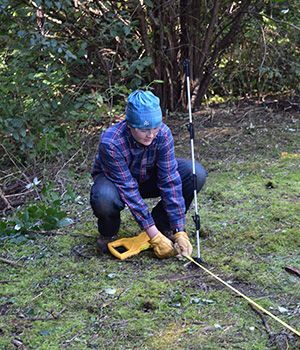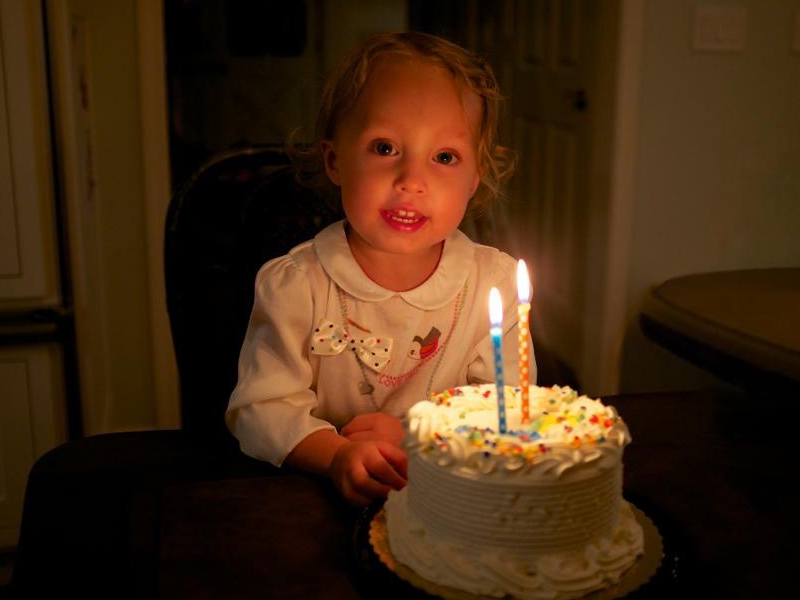
Nature or "Supranature?"
What “worlds” do our children need to be exposed to for understanding the world they are growing up in? Do children raised in cities really need to be taken out into the country to see grass and trees and lakes, if their immediate world is the infrastructure and people of their city? Do our little children need to learn how to use computers and iPhones when they are young, so that they will have an idea of how the abstract world of technology works by the time they need to use it on a daily basis?
These are questions many parents and educators ponder, and the answers coming from all corners vary greatly and passionately. I always try to look at these questions through the lens of the Montessori approach. As the bumper sticker of a fellow Montessori teacher asks, “What would Maria Montessori Say?”

We know that Dr. Montessori emphasized the importance of preparing a special environment for our children to learn in, and we also know that she believed the child’s developmental task is to adapt to his time, place, and culture. Another idea that Dr. Montessori explored was the importance of sharing the marvel of man’s accomplishments, or the world of manmade things, which Montessori called supranature. She used the word supra, meaning on top of, or out of (not superior as a value but as a position). And she used the word nature, meaning the natural world with its elements and life, which interact to create a surviving balance of: air, water, land, plant life and animal life, interacting with the sun.
Dr. Montessori drew a cursory depiction of the interplay of these elements and life forms, called The Chart of Interdependencies. On it, we see representative drawings of the sun at the top, then water underneath, then land, then the plant kingdom below and to one side, and the animal kingdom to the other side. There are arrows back and forth between each of these natural forms to spark conversation amongst elementary-aged children about the interdependencies that exist in nature. Below this web is a small black circle that represents the manmade world, and stemming from it are several groups of human families, and arrows from one to the other and back to the natural world consisting of sun, air, water, land, and the plant and animal kingdoms.
This interdependent human world includes everything that humans have discovered, invented, and built. Again, Dr. Montessori called this supranature: everything humans have built on top of nature, and which depends on the balance of the natural world and interaction with it. The message here is that we have accomplished many wonderful things that have made us more comfortable and successful as human beings, but that living in harmony with the balance of the natural world we live in is vital to our survival. This realization invites conversation about the moral implications of our inventions and actions and prepares our elementary-aged children to consider the responsibility that comes with our freedoms.
How Do We Connect?
This past summer in a Montessori Orientation to Adolescent Studies course held at Beacon Academy, one teacher pointed out that the environment for the adolescents attending this Montessori high school is not one of nature, but that of a city. We pondered, “How do we help these adolescents to realize their responsibility to other people beyond the immediate surroundings, and ultimately, the relevance of the natural world and its interconnectedness? What is here, in this city environment, that could make them care about the earth’s resources and understand their part in affecting the world?” It is one thing to talk about such morals on an abstract level and to tell young people to care, but in Montessori education, we are always looking for ways to connect our children to the more concrete realities that will ignite their own curiosities, investigations, moral development, and actions. This connection to the land, how nature behaves, and our intimate connection to it and to all people, is an important aspect of Montessori’s plan of education, particularly for adolescents.

The answer we explored in this conversation was that, because everything is connected, we can find our way to the natural world by starting with the immediate environment, wherever that may be. One colleague demonstrated this by asking, “Where does the air we’re breathing in this room come from?” We help our children start the curious journey that leads back to the natural world. When adolescents answer that this air comes through a vent system, created by humans, to get the air from outside to us, this leads to other questions: How does this vent system work? How and when did humans figure out to build that? Where does the oxygen outside in the city streets come from? Where are the trees in the city, and by looking at a site map of our city, can we find the areas with the highest concentration? Does it matter how much oxygen is in the air and where, and does the movement of the air currents affect the oxygen levels in certain areas of the city? These questions may motivate students to venture out into the city with measuring devices to find the answers to their questions, and their research may lead them even further.
Another beginning question might be: “Where does the clean drinking water in our building come from?” Students may then wonder, how did it get here, through what pipe system, and where is the origin? Does it come from Lake Michigan? How far away is that and where does the water travel? Where and how is it cleaned so that we can drink it? What bacteria and minerals are in it before and after it gets cleaned? How do the original minerals get into that water? Is it related to the types of rock under Lake Michigan?
One question leads to another, and each one takes curious adolescents closer and closer into the inner workings of our natural world, on which everything in our supranature—our man-made world—interacts and ultimately relies. Understanding this interaction, the ways it works, and the role that humans play in creating, guiding or controlling this interaction, is not only important for our adolescents as they enter adult life; it brings meaning to their lives and brings them into immediate contact with their individual sense of purpose, making any work they choose to do meaningful and connected to other people—past, present, and future.
Preparing Younger Children for Their Later Years
As for the question of whether little children need exposure to iPhones and technology in order to understand it, one must first ask how we help younger children prepare for their elementary years and adolescence, when they can grasp abstract ideas in meaningful ways and appreciate interconnectedness that cannot be seen, but must be imagined with a more advanced ability to think and reason. To prepare for each stage of life, children must have their developmental needs properly met in age-appropriate ways so that they can be absorbed. Very little children need direct contact with the real world in order to love it and connect with it. Unless they love the world around them, our children will never have the motivation to ask the questions that will lead to further investigations, or develop morals to care for the earth and their surroundings. We cannot expect older children to care about things they have not experienced and learned to love by direct, meaningful interaction from their earlier years.

Because young children explore through their five senses, they can only understand and fall in love with the natural world of flowers, trees, fresh air, lake water, mountains, and rivers by touching, smelling, tasting, hearing and seeing them for real. A little bit of exposure can go a long way; perhaps you don’t need to spend more than a few hours here and there in the grass of a park, at the edge of a pond, or exploring the bark of a tree in order to give your children the experience of how beautiful and marvelous the natural world is. Research continues to suggest that the natural world has calming and healing effects on people, so we know that the more exposure the better. When nature is far from where you live, aim for the immediacy of the experience over the amount of time spent. If your young children can touch, smell, hear, and see actual nature—with you there to model your feelings of respect, awe, or appreciation for it—they will develop a love for it, too.
Very young children do not yet have the structures or experiences necessary for comprehending the abstract world of technology, and because of the ways screens can distract our children from their more immediate surroundings, it is logical to conclude that time with technology is not well spent until a person has a firm grasp of reality and an appreciation of what it provides. Technology is, after all, created by humans as abstractions on top of the natural world.
When children are older and have developed an individual love and appreciation for the real world, they can investigate the inner workings of how computers are made, why they behave and react the way they do, and the history of the people who invented them and how they made their discoveries. They may, by the time they are adolescents, be curious to try to make a computer themselves, or an iPhone, or to examine the social and moral behaviors of people interacting through them. Their questions can lead them to many original studies, the results of which they often want to share with others.

To help a child become a young adult who wants to (and knows how to) collect new information and share it, and who understands both the natural and the technological world, and who most importantly, loves and appreciates these with their interdependencies, should be our goal as parents and educators. We must focus on young children’s needs for connecting to the real world as a foundation for their character development and understanding. We must be aware of the needs elementary-aged children have for connecting with other people face to face, so that they can understand and become curious about the more abstract world of interconnections in nature and between nature and peoples. And we must aim to support our adolescents to comprehend, care about, and want to investigate the technological and supranature world humans have created, so that they can carry the torch of exploration further with a love and understanding of the interconnectedness of this real, natural world and the abstract world humans have created. This ultimate goal must be on our minds, always.


